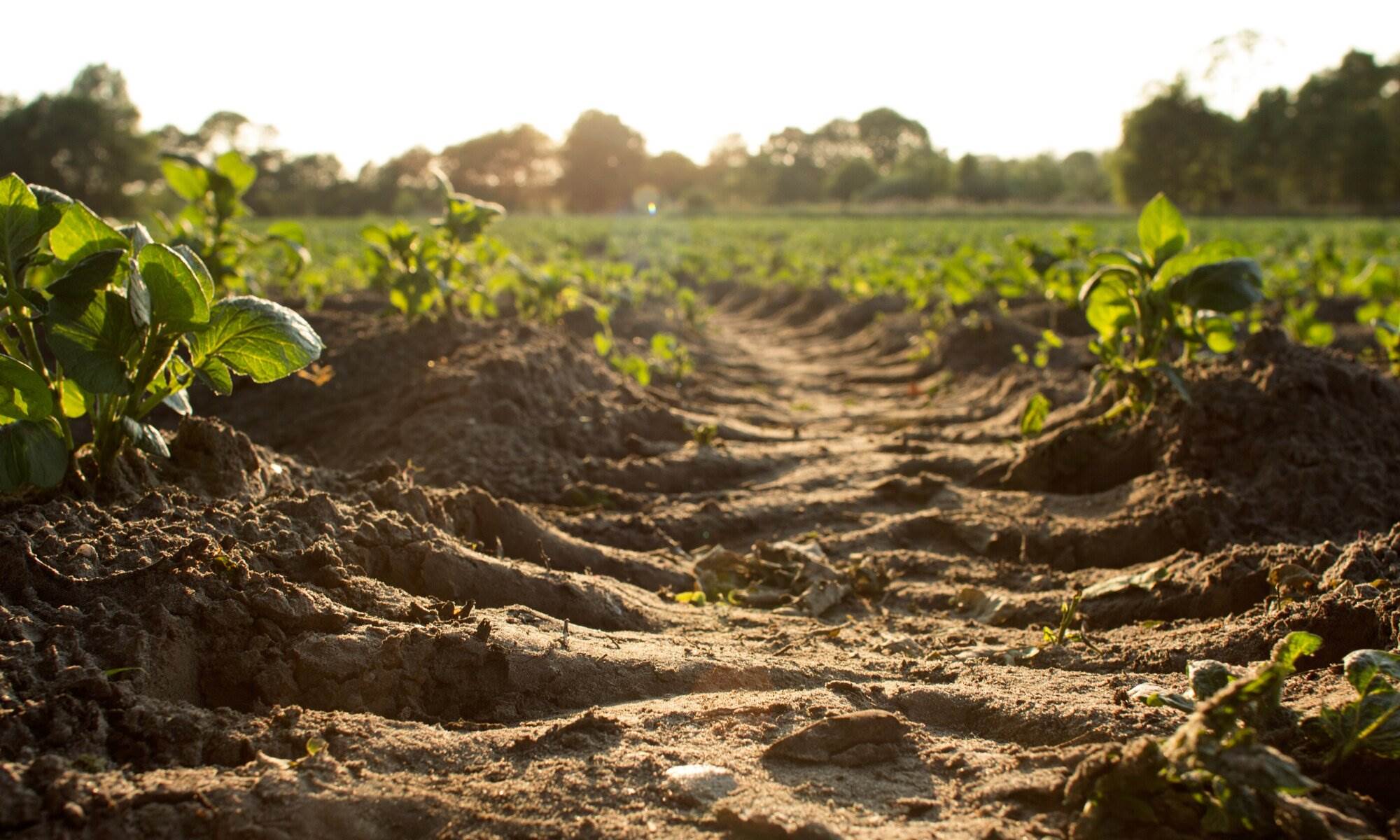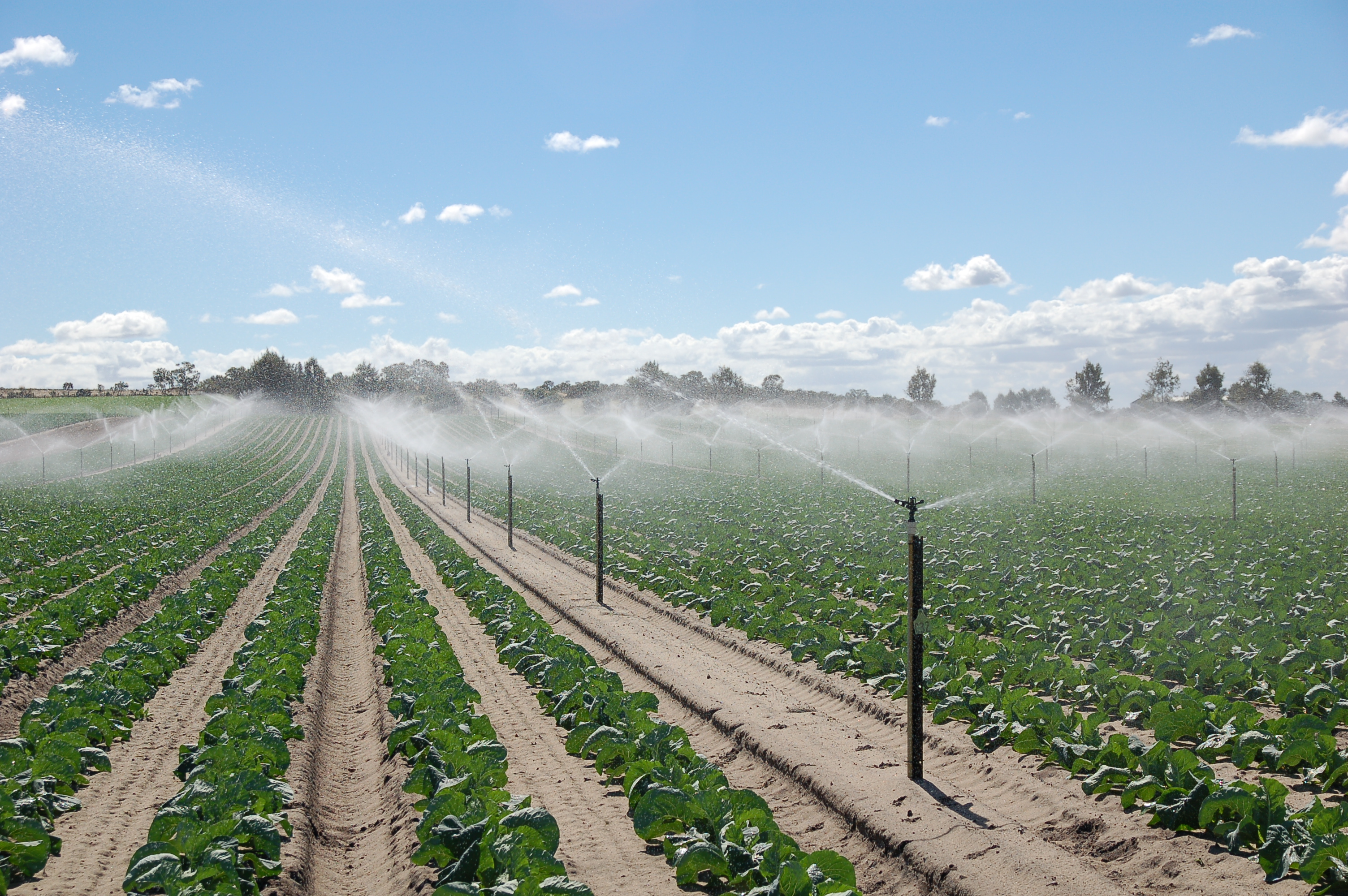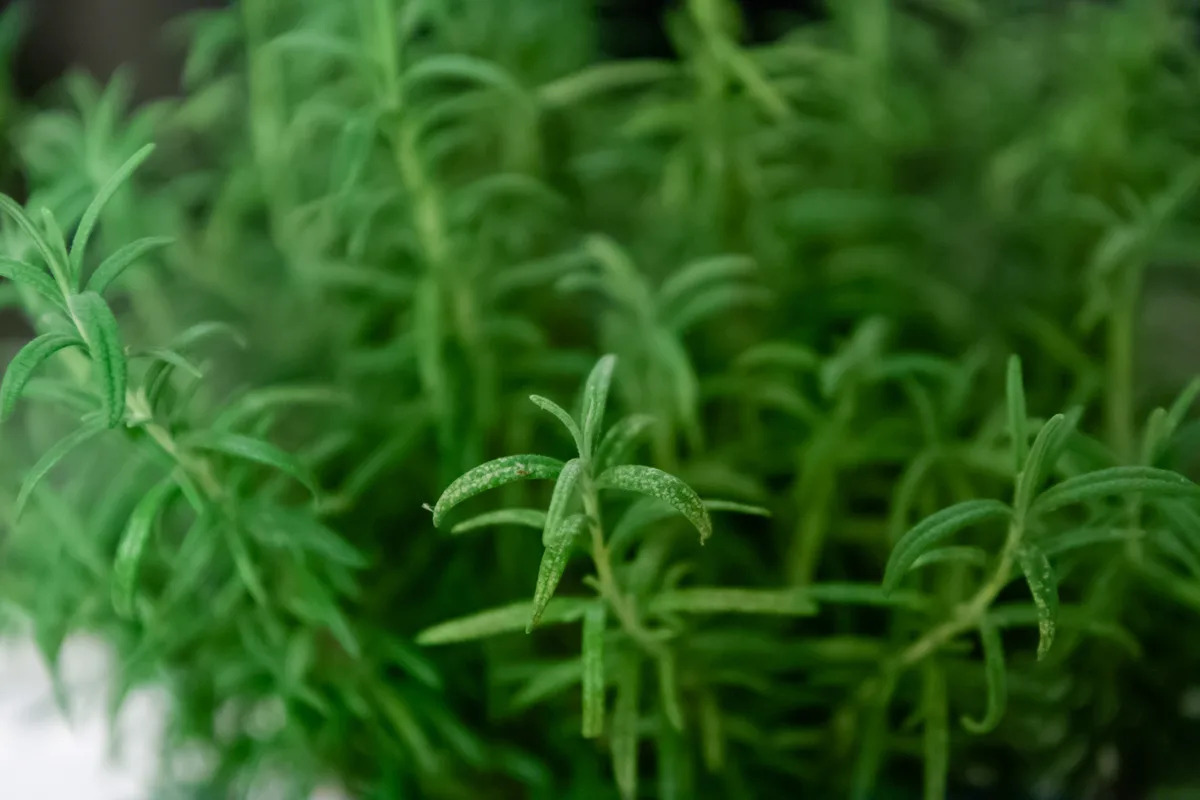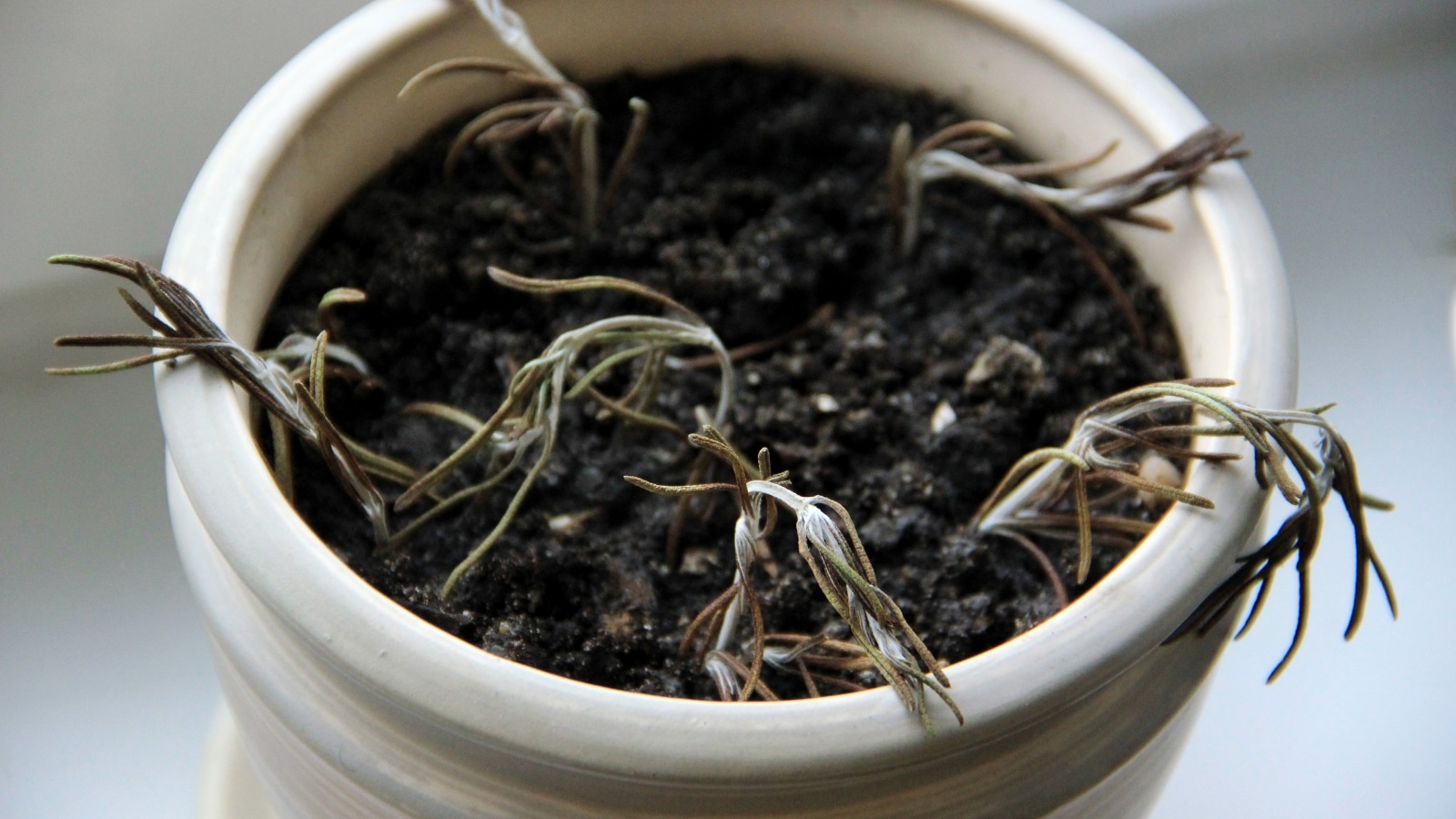Home>Gardening Tips and Tricks>Eco-Friendly Gardening>Why Is Planting A Variety Of Crops On One Farm More Sustainable Than Monoculture?
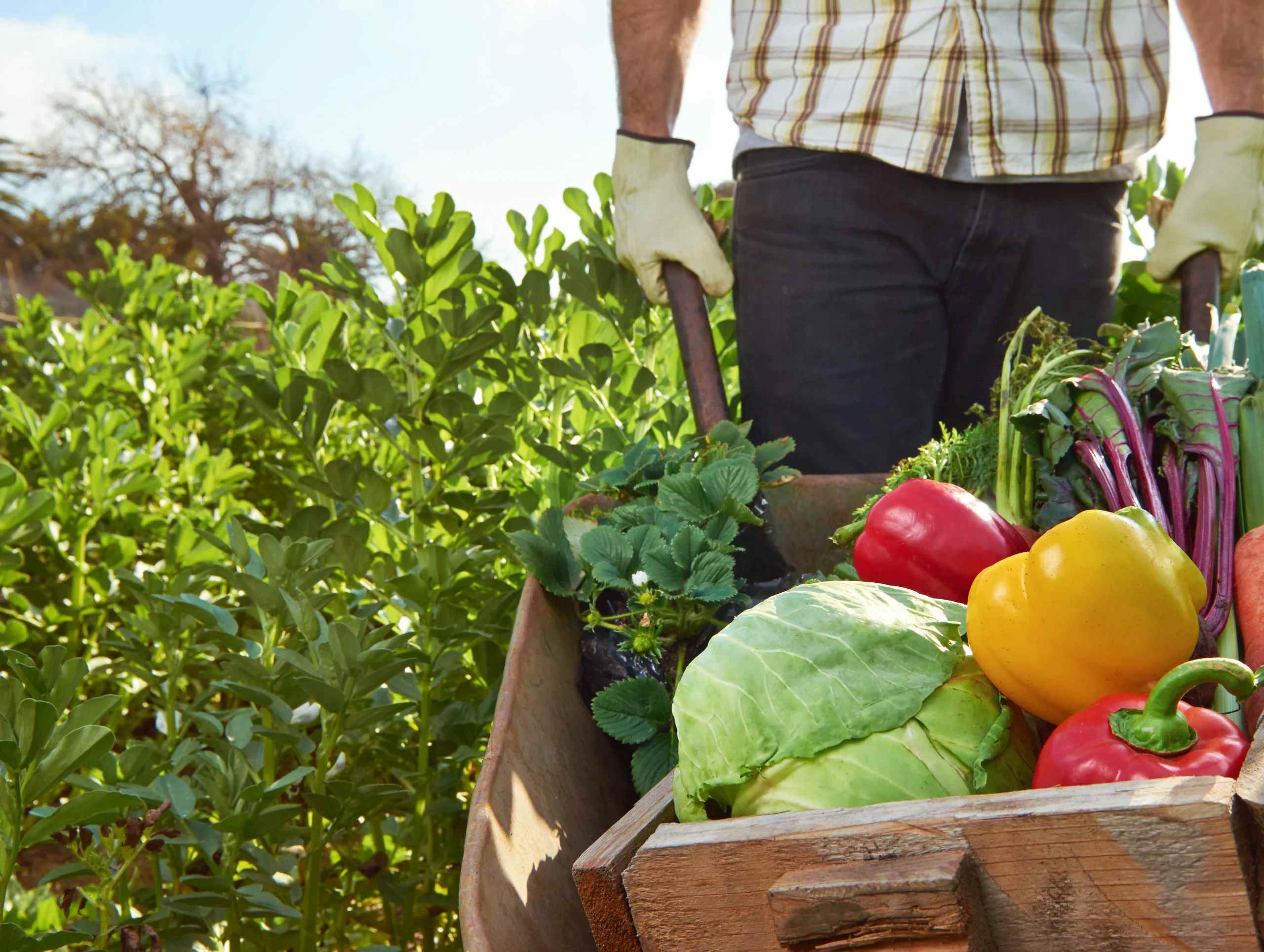

Eco-Friendly Gardening
Why Is Planting A Variety Of Crops On One Farm More Sustainable Than Monoculture?
Modified: January 22, 2024
Discover the benefits of eco-friendly gardening by planting a variety of crops on one farm. Learn why this sustainable practice is superior to monoculture.
(Many of the links in this article redirect to a specific reviewed product. Your purchase of these products through affiliate links helps to generate commission for Chicagolandgardening.com, at no extra cost. Learn more)
Table of Contents
- Introduction
- Definition of Monoculture
- Definition of Crop Diversity
- Environmental Drawbacks of Monoculture
- Benefits of Crop Diversity
- Enhanced Soil Fertility
- Pest and Disease Management
- Nutrient Cycling and Soil Health
- Resilience to Climate Change
- Economic Benefits of Crop Diversity
- Challenges and Barriers to Implementing Crop Diversity
- Conclusion
Introduction
Welcome to the world of eco-friendly gardening, where sustainability and environmental consciousness are at the forefront of our minds. One important aspect of sustainable gardening practices is the promotion of crop diversity. In this article, we will delve into the concept of planting a variety of crops on one farm, as opposed to monoculture, and explore why it is more sustainable.
Monoculture, as the term suggests, refers to the practice of cultivating a single crop over a large area. This method has been prevalent in modern agriculture due to its efficiency and ability to maximize yields. However, its widespread adoption has led to several environmental drawbacks, including soil degradation, increased water usage, and the prevalence of pests and diseases.
In contrast, crop diversity involves growing a wide range of different crops on the same piece of land. This approach mimics the natural diversity found in ecosystems and has numerous benefits that contribute to a more sustainable and resilient farming system. By growing a variety of crops together, farmers can create a harmonious and balanced environment that supports the overall health of the ecosystem.
In the following sections, we will explore in detail the environmental benefits of crop diversity, such as enhanced soil fertility, improved pest and disease management, and better nutrient cycling. Additionally, we will discuss how crop diversity can help farmers adapt to and mitigate the effects of climate change. Lastly, we will touch upon the economic benefits of crop diversity and the challenges that farmers may face in implementing this practice.
So, if you’re ready to embark on a journey towards sustainable gardening and learn how planting a variety of crops on one farm can contribute to a healthier and more environmentally friendly approach, let’s dive in!
Definition of Monoculture
Monoculture is a farming practice characterized by the cultivation of a single crop species over a large expanse of land. This approach has become increasingly prevalent in modern agriculture due to its potential for increasing productivity and simplifying the farming process. However, the focus on growing a single crop to maximize yield can lead to numerous environmental and agricultural challenges.
In a monoculture system, farmers typically dedicate vast areas of land to a single crop, such as corn, soybeans, or wheat. This means that the majority of the land is used for growing one specific plant species, often to the exclusion of all others. Such intense specialization can be facilitated by large-scale machinery, advanced irrigation systems, and the use of synthetic fertilizers and pesticides.
The rise of monoculture is primarily driven by the desire for high crop yields and increased efficiency. By focusing on a single crop, farmers can specialize their equipment, streamline their operations, and simplify management practices. This can lead to higher levels of production and lower labor costs.
However, monoculture systems come with their own set of challenges. Firstly, the continuous cultivation of a single crop depletes the soil of specific nutrients, leading to nutrient imbalances and reduced soil fertility. Secondly, the reliance on synthetic fertilizers and pesticides in monoculture can lead to water pollution and negative impacts on biodiversity. Lastly, the lack of crop diversity makes monoculture susceptible to pests and diseases, often requiring increased pesticide use.
Additionally, monoculture systems have implications beyond the immediate environment. The loss of biodiversity due to the conversion of diverse ecosystems into vast monoculture fields can disrupt natural habitats and decrease the resilience of the ecosystem as a whole. This can impact pollinators, beneficial insects, and other organisms that contribute to a healthy and balanced ecosystem.
Definition of Crop Diversity
Crop diversity, also known as polyculture or mixed cropping, is the practice of growing a variety of different crops on the same piece of land. It promotes the cultivation of multiple plant species in close proximity, mimicking the natural diversity found in ecosystems. This approach contrasts with monoculture, where a single crop dominates a large area.
In a crop diversity system, farmers strategically choose a mix of crops that complement one another in terms of their growth requirements, nutrient needs, and ecological interactions. This can include a combination of annual and perennial crops, legumes, grains, fruits, vegetables, and herbs. The specific combination of crops depends on factors such as climate, soil type, market demand, and the farmer’s preferences and goals.
With crop diversity, the land is utilized more efficiently, as different crops occupy different ecological niches and utilize resources in different ways. For example, deep-rooted crops can penetrate deeper into the soil, accessing nutrients that are out of reach for shallow-rooted plants. This increases overall nutrient capture and reduces nutrient leaching.
Moreover, the interaction between different crops in a diverse system can lead to mutually beneficial relationships. Some crops act as natural pest repellents, repelling pests that might attack neighboring crops. Others attract beneficial insects or provide habitat for pollinators, enhancing pollination and natural pest control services.
Crop diversity also helps to manage the risk of crop failures and disease outbreaks. Since different crops have varying levels of susceptibility to pests and diseases, growing a range of crops reduces the overall vulnerability of the farm to potential losses. This is in stark contrast to monoculture, where the reliance on a single crop makes the entire system more susceptible to widespread pest or disease infestations.
Overall, crop diversity preserves and enhances the ecological balance of the farm. By mimicking natural ecosystems and fostering biodiversity, it contributes to a healthier and more resilient agricultural system. Additionally, diverse crops can provide a wider range of products for market diversification, improving economic stability for farmers.
Environmental Drawbacks of Monoculture
Although monoculture has been widely adopted for its efficiency and high yields, this farming practice is not without its environmental drawbacks. Here are some of the key concerns associated with monoculture:
Soil Degradation: Monoculture depletes the soil of specific nutrients by continuously growing the same crop, leading to imbalances and reduced soil fertility. The repetitive use of synthetic fertilizers can further degrade the soil’s structure and nutrient-holding capacity.
Increased Water Usage: Monoculture often requires intense irrigation to support the large-scale growth of a single crop. The concentrated water usage can strain local water resources and lead to a decline in water quality due to increased runoff and leaching of chemical inputs.
Pest and Disease Pressure: By planting a large expanse of a single crop, monocultures create ideal conditions for pests and diseases to thrive. The absence of natural predators and the abundance of a suitable host plant can result in rapid outbreaks, leading to increased reliance on pesticides and chemical treatments.
Loss of Biodiversity: Monoculture systems contribute to the loss of biodiversity by converting diverse ecosystems into homogenous fields. The removal of natural habitats reduces the presence of pollinators, beneficial insects, and other essential organisms. This can disrupt ecosystem balance and lead to negative cascading effects on wildlife and plant species diversity.
Chemical Dependency: Monoculture relies heavily on synthetic fertilizers, pesticides, and herbicides to maintain productivity and control pests. The excessive use of these chemicals can leach into water bodies, leading to water pollution, and can harm non-target organisms, including beneficial insects and soil microorganisms.
Erosion and Soil Compaction: Monoculture systems are more susceptible to erosion and soil compaction due to the lack of diverse plant cover and shallow root systems. Without varied root structures, soil becomes vulnerable to erosion by wind and water. Soil compaction can also occur due to heavy machinery use, leading to decreased water infiltration and nutrient availability.
Impact on Climate Change: Monoculture contributes to climate change through the emission of greenhouse gases. The application of synthetic fertilizers releases nitrous oxide, a potent greenhouse gas. Additionally, monoculture contributes to deforestation, as large areas of land are cleared to make way for monocrops, further exacerbating climate change.
These environmental drawbacks highlight the need for a shift towards more sustainable farming practices, such as crop diversity. By moving away from monoculture, we can mitigate these negative impacts and build a more resilient and environmentally friendly agricultural system.
Benefits of Crop Diversity
Crop diversity, also known as polyculture, offers a range of benefits that contribute to a more sustainable and resilient farming system. Let’s explore some of the key advantages of adopting crop diversity:
Enhanced Soil Fertility: Growing a variety of crops helps to improve soil health and fertility. Different plants have diverse nutrient requirements, and their root systems reach different depths. This diversity allows for more efficient nutrient uptake and reduces nutrient depletion in the soil. Furthermore, certain crops, like legumes, have the ability to fix nitrogen from the atmosphere, enriching the soil with this crucial nutrient.
Pest and Disease Management: Crop diversity acts as a natural defense against pest and disease outbreaks. By planting a mix of crops, farmers create a habitat that diversifies pests’ target plants, reducing the risk of large-scale infestations. Additionally, some crops emit natural compounds that repel pests, acting as a form of natural pest control.
Nutrient Cycling and Soil Health: Different crop residues and root systems contribute to the cycling of nutrients and organic matter in the soil. Diverse plants with varying carbon-to-nitrogen ratios help promote microbial activity and decomposition, enhancing soil structure and water-holding capacity. This nutrient cycling and organic matter decomposition boost overall soil health and fertility over time.
Resilience to Climate Change: Crop diversity helps farmers adapt to and mitigate the effects of climate change. By cultivating a variety of crops, farmers reduce the risk of total crop failure due to extreme weather events or changing climate patterns. Some crops may be better suited to heat, drought, or flood conditions, ensuring the overall stability of the farm’s production.
Biodiversity Conservation: Crop diversity promotes biodiversity in agricultural landscapes. The presence of diverse crops provides a habitat for beneficial insects, pollinators, and other wildlife, contributing to ecosystem balance. This biodiversity conservation can help protect endangered species, support ecological systems, and ensure the long-term sustainability of the surrounding environment.
Economic Benefits: Crop diversity offers economic advantages for farmers. By diversifying their crop portfolio, farmers can tap into different markets, reduce dependency on a single crop, and spread financial risks. Crop diversity can also foster local food systems, improve food security, and create niche markets for specialty crops or heirloom varieties.
These benefits highlight the importance of incorporating crop diversity into our agricultural practices. By embracing a more diverse and sustainable approach to farming, we can improve soil health, enhance resilience, conserve biodiversity, and contribute to a more sustainable and economically viable future for agriculture.
Enhanced Soil Fertility
Crop diversity plays a vital role in enhancing soil fertility, which is fundamental for sustainable gardening and agricultural practices. By growing a variety of crops, farmers can improve soil health and productivity in several ways:
Nutrient Accumulation: Different crops have varying nutrient requirements. When a diverse range of crops is grown together, they collectively capture and utilize a broader spectrum of nutrients from the soil. For instance, leguminous crops, such as beans or peas, have the ability to fix nitrogen from the air and convert it into a form that other plants can use. This enriches the soil with nitrogen, benefiting the subsequent crops.
Root Structure and Depth: Different crops also have different root systems that vary in size, structure, and depth. Some crops have deep taproots that can access nutrients and moisture from deeper soil layers. Others have a fibrous root system that helps improve water infiltration and nutrient uptake in the topsoil. The combination of these varying root structures improves soil structure, increases water holding capacity, and enhances nutrient availability.
Organic Matter Input: Crop diversity contributes to the production of organic matter through the decomposition of plant residues. When diverse crops are grown and their residues are returned to the soil, the organic matter content increases. Organic matter plays a crucial role in soil fertility by improving soil structure, water retention, and nutrient-holding capacity. It also serves as a food source for beneficial soil organisms.
Cover Crops and Green Manure: Introducing cover crops and green manure into a diverse cropping system further enhances soil fertility. Cover crops are grown primarily to protect and enrich the soil during periods when the main cash crops are not actively growing. They help prevent erosion, suppress weeds, and add organic matter to the soil when they are incorporated. Green manure crops are intentionally grown and then turned into the soil to provide nutrients and improve soil structure.
Microbial Diversity: A diverse range of crops supports a diverse population of beneficial soil microorganisms. These microorganisms play critical roles in nutrient cycling, organic matter decomposition, and disease suppression. By maintaining a variety of crops, farmers promote a balanced and thriving soil microbiome, fostering a healthy and functioning ecosystem within the soil.
Overall, the incorporation of crop diversity contributes to enhanced soil fertility in numerous ways. It promotes nutrient accumulation, improves root structure and depth, increases organic matter input, encourages the use of cover crops and green manure, and supports a diverse soil microbiome. These factors work together to create a fertile soil environment that supports the growth of healthy and productive plants, ultimately leading to sustainable gardening and agriculture practices.
Pest and Disease Management
Crop diversity has significant benefits when it comes to pest and disease management in eco-friendly gardening and farming. By planting a variety of crops, farmers can employ natural methods to minimize pest and disease outbreaks, reducing the need for chemical interventions. Here are some ways in which crop diversity helps in pest and disease management:
Interrupting Pest Life Cycles: Different pests have specific host plants that they target for feeding and reproduction. By growing a variety of crops, farmers disrupt the life cycles of pests that rely on a single crop as their primary host. This reduces the likelihood of pest outbreaks and helps to maintain pest populations at manageable levels.
Natural Pest Repellents: Some plants naturally produce compounds that repel pests, serving as a natural form of pest control. By intermixing repellant plants with susceptible crops, farmers can reduce pest pressure. For instance, planting basil or marigold near tomatoes can deter pests like aphids and nematodes, which are known to attack tomato plants.
Beneficial Insects and Predators: Crop diversity attracts a wide range of beneficial insects and predators that prey on common pests. By providing a diverse habitat and a variety of food sources, farmers can encourage the presence of these natural enemies. Ladybugs, lacewings, and predatory wasps are examples of beneficial insects that help control pest populations by feeding on aphids, caterpillars, and other pests.
Biological Control: Introducing beneficial organisms, such as predatory insects or microbes, can help maintain a balance between pests and natural enemies. For example, farmers may introduce nematodes that parasitize and control pests like root-knot nematodes, reducing the need for chemical treatments. Crop diversity provides a supporting environment for these beneficial organisms, increasing their effectiveness in pest control.
Trap Cropping: In a diverse cropping system, farmers can strategically plant trap crops, which are attractive to specific pests, diverting them away from main cash crops. This technique reduces pest damage to the primary crops while allowing pest populations to be concentrated and easily managed on trap crops. For instance, planting radishes as a trap crop can attract flea beetles away from other susceptible crops.
Cultural Control: Crop diversity enables farmers to implement cultural control measures to manage pests and diseases. Crop rotation, which involves alternating crops in a particular order, helps break pest and disease life cycles. Likewise, avoiding continuous planting of the same crop reduces the buildup of pests and diseases in the soil, thereby minimizing the need for chemical treatments.
By integrating these pest and disease management techniques through crop diversity, farmers can reduce their reliance on synthetic pesticides and mitigate the negative impacts on beneficial insects, soil health, and human health. This approach promotes a more sustainable and environmentally-friendly gardening and farming system, ultimately leading to healthier plants and safer food for consumers.
Nutrient Cycling and Soil Health
Crop diversity plays a significant role in nutrient cycling and soil health, contributing to the long-term sustainability of eco-friendly gardening and agricultural practices. Here’s how crop diversity improves these crucial aspects:
Increased Nutrient Availability: Different crops have unique nutrient requirements. By growing a variety of crops, farmers can prevent nutrient depletion and ensure a more balanced nutrient supply in the soil. Each crop takes up specific nutrients from the soil, reducing the risk of nutrient imbalances and deficiencies. This reduces the need for synthetic fertilizers and promotes natural nutrient cycling.
Root Diversity: Different crops develop varied root systems, including taproots, fibrous roots, and mycorrhizal associations. This diversity improves soil structure by breaking up compacted soil, enhancing water infiltration and aeration. Moreover, diverse root systems help different crops access different soil depths, allowing for more efficient nutrient uptake and reducing nutrient leaching.
Organic Matter Enrichment: Crop diversity contributes to increased organic matter in the soil. As crops grow and residues decompose, they add organic matter to the soil. Organic matter improves soil structure, water holding capacity, and nutrient retention. It serves as a food source for beneficial soil organisms, stimulating microbial activity that aids in nutrient cycling and breakdown of organic matter into plant-available forms.
Cover Crops and Green Manure: Introducing cover crops and green manure crops into a diverse cropping system enhances nutrient cycling and soil health. Cover crops, planted between main cash crops, protect bare soil from erosion, improve water infiltration, and scavenge excess nutrients. They also contribute organic matter when incorporated into the soil. Green manure crops, grown specifically to be turned into the soil, add nutrients and improve soil structure as they decompose.
Microbial Diversity: Crop diversity fosters a diverse soil microbial community. Different crops release varied root exudates, which serve as food sources for different microorganisms. This diversity of microorganisms helps in the decomposition of organic matter, nutrient cycling, and disease suppression. A thriving microbial community contributes to overall soil health and the availability of nutrients for plant uptake.
Reduced Soil Erosion: Monoculture systems are more susceptible to soil erosion due to the lack of diverse plant cover and shallow root systems. On the other hand, planting diverse crops can mitigate erosion by increasing plant cover and improving soil structure. The combination of different root lengths and densities holds the soil together, reducing the risk of erosion caused by wind and water.
The promotion of nutrient cycling and soil health through crop diversity is essential for building and maintaining sustainable agricultural systems. By incorporating a variety of crops, gardeners and farmers can improve nutrient availability, enhance soil structure and water-holding capacity, increase organic matter content, support diverse soil microbial communities, and mitigate erosion. These practices lead to healthier soils, improved crop productivity, and a more environmentally friendly approach to gardening and agriculture.
Resilience to Climate Change
Crop diversity plays a crucial role in building resilience to the impacts of climate change in eco-friendly gardening and agriculture. As weather patterns become more unpredictable and extreme, maintaining a diverse range of crops offers several key benefits:
Adaptation to Variable Climate: Different crops have varying tolerances to heat, drought, and excessive rainfall. By cultivating a variety of crops, farmers increase the likelihood of having at least some crops that can thrive under different climatic conditions. This economic resilience helps farmers cope with unpredictable weather patterns and reduces the risk of crop failure or substantial yield losses.
Diversification of Risks: Climate change brings an increased risk of specific pests, diseases, and climatic events. Planting a mix of crops helps spread these risks, as different crops have varying susceptibility to pests and diseases. Additionally, if one crop is affected by an extreme weather event, other crops may still survive, providing a buffer against substantial economic losses.
Water Management: Climate change often results in more frequent and intense droughts or heavy rainfall events. Growing a diverse range of crops with different water requirements allows farmers to better manage water resources. Some crops may be more resilient during dry spells, while others can better tolerate excessive moisture. This flexibility helps optimize water usage and improve overall water efficiency.
Conservation of Genetic Diversity: Crop diversity contributes to the preservation of genetic resources. Different crop varieties and landraces possess unique traits, including resistance to pests, diseases, and climate variability. By growing diverse crops, farmers safeguard genetic diversity and potentially have access to varieties that can adapt to changing environmental conditions, ensuring long-term agricultural productivity and resilience.
Pollination Services: Climate change can impact pollinator populations and disrupt the pollination process. Diverse crops provide a wide range of flowering plants, attracting an array of pollinators. This supports pollinator health and ensures the pollination of crops, improving yield stability and enhancing overall food production despite variations in climate and pollinator availability.
Carbon Sequestration: Diverse cropping systems have the potential to sequester more carbon in the soil compared to monoculture. The presence of various crops with different root systems and residue qualities improves organic matter content and nutrient cycling. This enhances soil carbon storage, mitigating greenhouse gas emissions and contributing to climate change mitigation efforts.
Crop diversity helps farmers adapt to the changing climate and mitigate the risks associated with unpredictable weather patterns. By incorporating a range of crops with diverse tolerances, optimizing water management, conserving genetic resources, supporting pollinators, and sequestering carbon, farmers can build resilience to climate change impacts and ensure the long-term sustainability of their farming systems.
Economic Benefits of Crop Diversity
Crop diversity brings significant economic benefits to farmers and the agricultural industry as a whole. By growing a variety of crops instead of relying on a single crop, farmers can unlock several advantages:
Market Diversification: Growing diverse crops allows farmers to tap into different markets and cater to various consumer demands. Each crop has its own market niche, opening up opportunities for niche markets, local food systems, and direct-to-consumer sales. By diversifying their product offerings, farmers can reduce their dependence on a single crop and mitigate the financial risks associated with price fluctuations or market downturns.
Price Stability: Monoculture systems are more vulnerable to price fluctuations as market conditions and consumer preferences change. By cultivating multiple crops, farmers can better withstand market volatility. If the price of one crop decreases, the income from other crops can help compensate for the loss, providing more stable and sustainable financial returns.
Reduced Input Costs: Crop diversity can lead to reduced input costs, including fertilizers, pesticides, and herbicides. Monoculture often requires higher chemical inputs to manage pests and diseases that thrive in a continuous cropping system. By diversifying crops, farmers can break pest and disease cycles, reducing the need for chemical interventions and potentially lowering input costs.
Improved Soil Health and Productivity: Crop diversity enhances soil health, leading to improved productivity and potentially higher yields. Healthy soils with balanced nutrient availability and enhanced organic matter content support the growth of healthy plants. This can result in improved crop quality and marketability, potentially commanding higher prices in the marketplace.
Farmers’ Resilience: By diversifying their crops, farmers enhance their resilience to various risks, including unpredictable weather patterns, pests, diseases, and market fluctuations. A more diversified farm is better able to adapt to changing conditions and absorb potential losses in one crop by relying on income generated from other crops. This resilience fosters stability and long-term economic viability.
Environmental Stewardship: Consumers are increasingly aware of the environmental impact of their food choices and are seeking out sustainably produced goods. Crop diversity aligns with sustainable and eco-friendly practices, enabling farmers to meet the growing demand for environmentally responsible products. This can lead to increased market access, niche market opportunities, and higher premiums for sustainably grown crops.
By embracing crop diversity, farmers can unlock economic advantages such as market diversification, price stability, reduced input costs, improved soil health and productivity, enhanced resilience, and alignment with consumer demands for sustainable agricultural practices. These economic benefits contribute to the long-term viability and profitability of farming operations while promoting more sustainable and environmentally friendly approaches to agriculture.
Challenges and Barriers to Implementing Crop Diversity
While crop diversity offers many benefits, there are also challenges and barriers that farmers may face when implementing this practice. Overcoming these obstacles is crucial for the successful adoption and integration of crop diversity into sustainable gardening and agriculture. Here are some common challenges:
Market Demand and Infrastructure: Farmers may encounter difficulties in finding markets and buyers for a diverse range of crops. Many existing agricultural systems are built around monoculture, and the infrastructure for processing, storage, and distribution may not be well-suited for diverse crops. Additionally, consumer demand for diverse crops may vary regionally, making it challenging to find consistent market outlets.
Knowledge and Education: Implementing crop diversity requires a certain level of knowledge and expertise. Farmers need to understand crop rotations, companion planting, intercropping, and other management practices associated with diversifying their crops. Lack of access to education and training programs on crop diversity can hinder farmers’ ability to adopt and implement these practices effectively.
Abundance of Monoculture Practices: The prevalence of monoculture practices in conventional agriculture can create certain barriers. Monoculture crops are often heavily subsidized, making it financially challenging for farmers to transition to more diverse systems without significant financial support. Additionally, farmers may face pressure to conform to monoculture practices due to market demands, input supplier influences, and land availability.
Access to Diverse Seeds and Varieties: Availability of diverse, regionally adapted seeds and varieties can be a challenge. Many seed companies focus on high-demand monoculture crops, making it more difficult to find and access a broad selection of diverse seeds. It may require additional effort to identify, source, and maintain a diverse seed bank for successful implementation of crop diversity.
Management and Planning: Diversifying crops requires careful planning and management. Farmers must consider crop rotations, planting schedules, pest and disease management strategies, and intercropping compatibilities. The complexity of managing multiple crops simultaneously can be daunting, requiring high levels of organization, knowledge, and labor inputs.
Risk and Uncertainty: Transitioning from monoculture to crop diversity involves risks and uncertainties. Farmers may be concerned about potential yield fluctuations, market demand, production challenges, and financial viability. The perceived higher risk associated with crop diversity can discourage some farmers from making the change, especially if they have limited resources or financial stability.
Addressing these challenges and barriers requires targeted support and interventions. Providing education and training programs, developing supportive policies, creating market incentives for diverse crops, and facilitating access to diverse seeds and resources are crucial steps in promoting the widespread adoption of crop diversity. By overcoming these challenges, farmers can unlock the full potential of diverse cropping systems and reap the numerous environmental, economic, and social benefits they offer.
Conclusion
Embracing crop diversity in eco-friendly gardening and agriculture is a powerful step towards creating a more sustainable and resilient farming system. By moving away from monoculture and cultivating a variety of crops, we can reap a multitude of environmental, economic, and social benefits.
We have explored how monoculture practices have led to environmental drawbacks such as soil degradation, water pollution, reduced biodiversity, and increased reliance on synthetic inputs. In contrast, crop diversity offers solutions to these challenges.
Crop diversity enhances soil fertility by improving nutrient cycling, promoting organic matter enrichment, and creating a favorable habitat for beneficial microorganisms. It also aids in pest and disease management by interrupting pest life cycles, attracting beneficial insects, and incorporating natural pest control methods.
Furthermore, crop diversity builds resilience to climate change by providing a diversified crop portfolio that can adapt to variable climates, mitigate risks, optimize water management, conserve genetic diversity, and support pollination services. It also brings economic benefits, including market diversification, price stability, reduced input costs, improved soil health, enhanced resilience, and alignment with consumer demands for sustainable products.
However, implementing crop diversity does come with challenges and barriers that farmers may face, such as market demand and infrastructure limitations, knowledge and education gaps, abundance of monoculture practices, limited access to diverse seeds and varieties, management considerations, and perceived risks and uncertainty. Overcoming these obstacles requires support in the form of education, training, policies, and access to resources.
In conclusion, by promoting and adopting crop diversity, we can create a more sustainable and resilient agricultural system that protects the environment, improves soil health, supports biodiversity, ensures food security, and enhances the livelihood of farmers. By recognizing the value of crop diversity, we can work towards a future where eco-friendly gardening and agriculture practices are the norm, benefiting both current and future generations.
